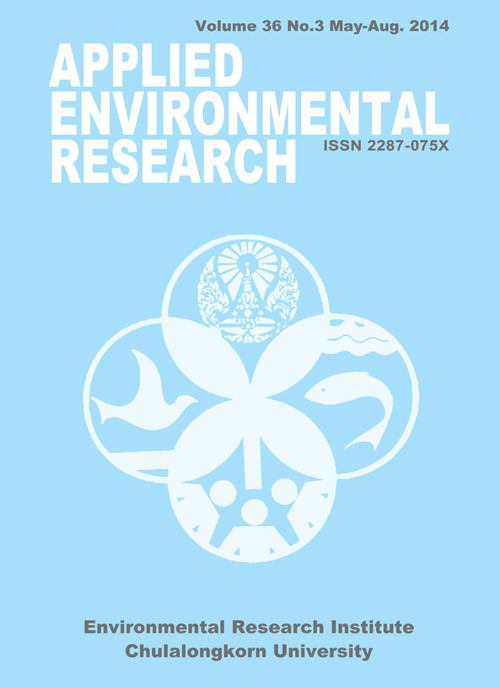Effect of EDTA and DTPA on Cadmium Removal from Contaminated Soil with Water Hyacinth
Main Article Content
Abstract
The effects of ethylenediaminetetraacetic acid (EDTA) and diethylene triaminepentaacetic acid (DTPA) on cadmium (Cd) uptake by water hyacinth (Eichhornia crassipes) in Cd-contaminated soil was studied. Experimental samples were separated into 4 treatment groups: 1) Untreated control, 2) EDTA addition, 3) DTPA addition, and 4) mixture of EDTA and DTPA (1:1) addition. The plants were harvested at 20, 40, 60, 80 and 100 days. Cd levels were measured in soil samples, water samples and two parts of the plant: shoot (stem and leaves) and root. The results showed that Cd accumulation in plants with added EDTA and DTPA were higher than the control set, indicating that EDTA and DTPA addition increased Cd uptake by water hyacinth. Cd accumulations in the root in all groups were significantly (p < 0.05) higher than that in the shoot. In EDTA added sets, Cd accumulation in the root was higher than in shoots and were measured at 160.91 and 13.37 mg kg-1 at 100 d, respectively. This research indicates that DTPA was most suitable for increasing the cadmium removal capacity of water hyacinth and offers a suitable phytoremediation technique to help clean contaminated sites.
Article Details

This work is licensed under a Creative Commons Attribution-NonCommercial 4.0 International License.
Published articles are under the copyright of the Applied Environmental Research effective when the article is accepted for publication thus granting Applied Environmental Research all rights for the work so that both parties may be protected from the consequences of unauthorized use. Partially or totally publication of an article elsewhere is possible only after the consent from the editors.
